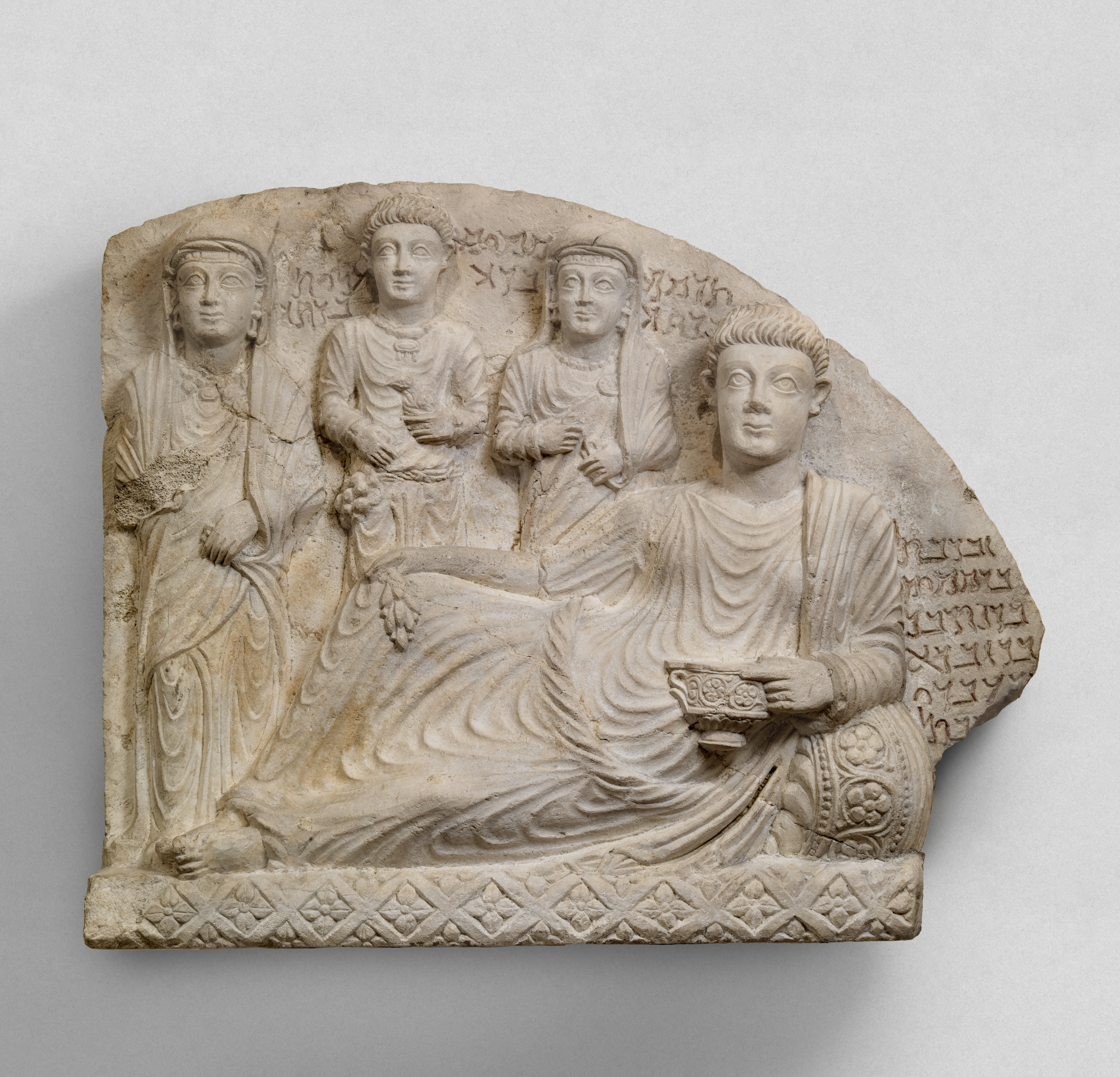2.42 Common Elite Culture: Tombstones
- Due Jan 23, 2022 at 11:59pm
- Points 3
- Questions 3
- Available Jan 10, 2022 at 12am - Apr 25, 2022 at 11:59pm
- Time Limit None
Instructions
The next key feature of the Roman Empire was a shared elite culture. To begin thinking about elite culture throughout the Roman Empire, compare and contrast the following images. The first is a funerary monument (tombstone) to Gaius Iulius Bacchus, a soldier in posted in Cologne, on what was then the border of the Roman Empire. He died aged 38 at the end of the 1st century AD. This monument is now in the Römisch-Germanisches Museum. On his tombstone, Gaius Iulius is depicted wearing a flowing garment and reclining on a couch. Gaius Iulius holds a cup or bowl, and there are two similar vessels on the table in front of him. A smaller figure--possibly a servant-- stands to the side.
The second is a funerary monument from Palmyra (in modern-day Syria), which was located at the intersection of major trading routes. At the top of the tombstone, an inscription in Aramaic commemorates Zabidol, who died in the second or third century AD. Zabidol reclines on a couch in a flowing garment, holding an ornate bowl or cup and resting on a patterned pillow. Zabidol's wife, daughters, and son were also depicted on the monument, standing behind him. This monument is now in the Met Museum.
